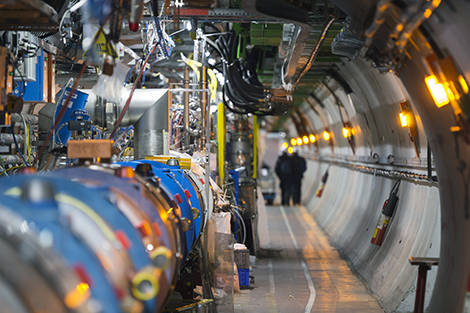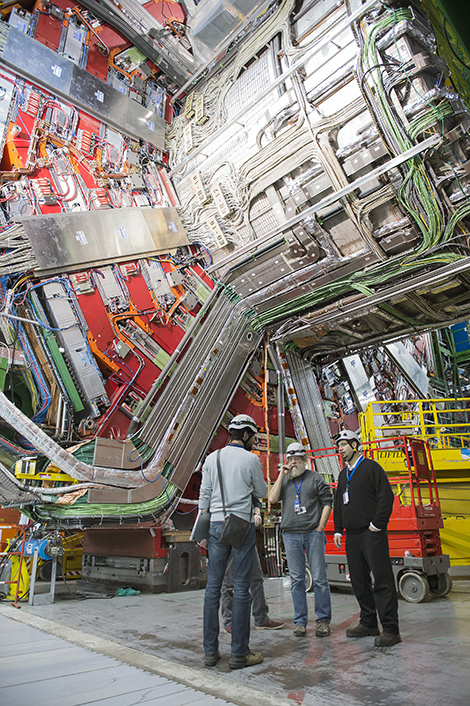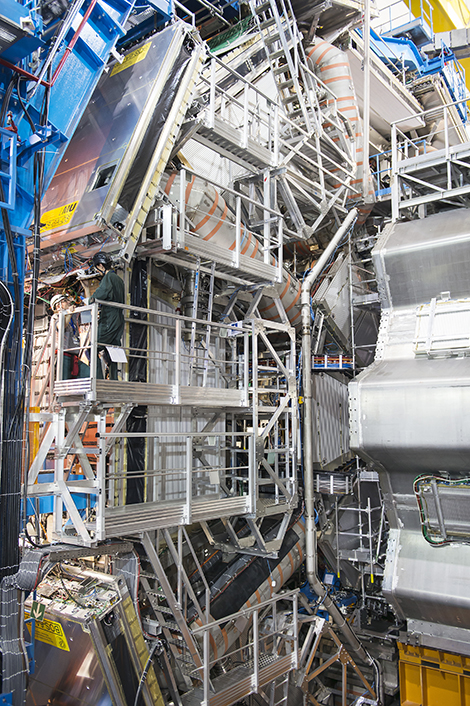Global S&T Development Trend Analysis Platform of Resources and Environment
| Within 10 years, a high-luminosity LHC at CERN | |
| admin | |
| 2018-06-15 | |
| 发布年 | 2018 |
| 语种 | 英语 |
| 国家 | 法国 |
| 领域 | 地球科学 |
| 正文(英文) | A new site opened on Friday, June 15, 2018, at the LHC, the Large Hadron Collider. Begun in 2011, this project aims to commission a high-luminosity LHC (HL-LHC) by 2026 that will increase the number of proton-proton collisions and gather more data. France is contributing substantially to this project (to the tune of 180 million euros, including salaries). Teams at CNRS and CEA are participating in technological research and development specifically on superconducting magnets and on extending the lifespan of detectors and the accelerator. In France more than 400 scientists are involved with this renewal of the world's largest and most powerful particle collider.The LHC Large Hadron Collider - was first brought into service in 2008. It is a ring with a 27-kilometer circumference equipped with thousands of superconducting magnets that hold accelerated particles inside the ring. The propelled particles collide at a speed close to the speed of light. To collect data, the collider has four particle detectors: Atlas, CMS, Alice and LHCb. This new work is to increase the collider's luminosity by a factor of 5 to 7, concentrating the largest possible number of particles in the smallest possible space, thereby increasing the number of collisions at the moment that the two proton beams cross. This will allow scientists to study rare phenomena and to obtain the indispensable high precision results needed to specify Higgs boson properties. More broadly, this is a step towards understanding the standard model and scenarios that flow from it. The CNRS and the CEA lead the French portion of the collaboration. They have been working for several years on superconducting magnets intended to effectively focus the beams. These magnets are one of the controlling parts for all future accelerators. Other R&D in this field is on magnets with very high fields that will, in the long term, increase the energy of the colliders. Teams from the CNRS, the CEA, and their university partners will work on the Atlas and CMS particle detectors: important improvements will be made to the detectors so that they function with better performance in much more intense conditions. For both the detectors and the accelerators, these projects are in collaboration with small- and medium-sized French companies. As part of scientific projects, France also envisages contributing to the challenge of processing the data from the HL- LHC experiments, which will exceed the exabyte1 scale for the first time. According to the current schedule, the HL-LHC will operate from 2026 to 2036-37 after two stoppage phases: 2019-2020 and 2024-2026 (when the CNRS and CEA will work on the particle detectors). The French laboratories involved with the LHC are:
 © Cyril Fresillon/LHC/CNRS Photothèque LHC Tunnel (Large Hadron Collider), a particle accelerator at the French-Swiss border. It is the world's most powerful particle accelerator.  © Cyril Fresillon/LHC/CNRS Photothèque Technician doing maintenance on the CMS (Compact muon solenoid), a large detector in the Large Hadron Collider (LHC), during a long technical stoppage (2013-2015).  © Cyril Fresillon/LHC/CNRS Photothèque Atlas, the largest particle detector ever built for particle physics (46m long and 25m high), opened during a stoppage. Designed to help us understand our Universe and how it evolved, it detects elementary particles produced during proton-proton collisions. Download the press release : 
Notes:1 1 billion gigabytes, i.e. 1018 bytes Contacts: CNRS Press Officer l Juliette Dunglas l +33(0)1 44 96 46 34 l juliette.dunglas@cnrs.fr |
| URL | 查看原文 |
| 来源平台 | Centre national de la recherche scientifique |
| 文献类型 | 新闻 |
| 条目标识符 | http://119.78.100.173/C666/handle/2XK7JSWQ/106987 |
| 专题 | 地球科学 |
| 推荐引用方式 GB/T 7714 | admin. Within 10 years, a high-luminosity LHC at CERN. 2018. |
| 条目包含的文件 | 条目无相关文件。 | |||||
| 个性服务 |
| 推荐该条目 |
| 保存到收藏夹 |
| 查看访问统计 |
| 导出为Endnote文件 |
| 谷歌学术 |
| 谷歌学术中相似的文章 |
| [admin]的文章 |
| 百度学术 |
| 百度学术中相似的文章 |
| [admin]的文章 |
| 必应学术 |
| 必应学术中相似的文章 |
| [admin]的文章 |
| 相关权益政策 |
| 暂无数据 |
| 收藏/分享 |
除非特别说明,本系统中所有内容都受版权保护,并保留所有权利。
修改评论